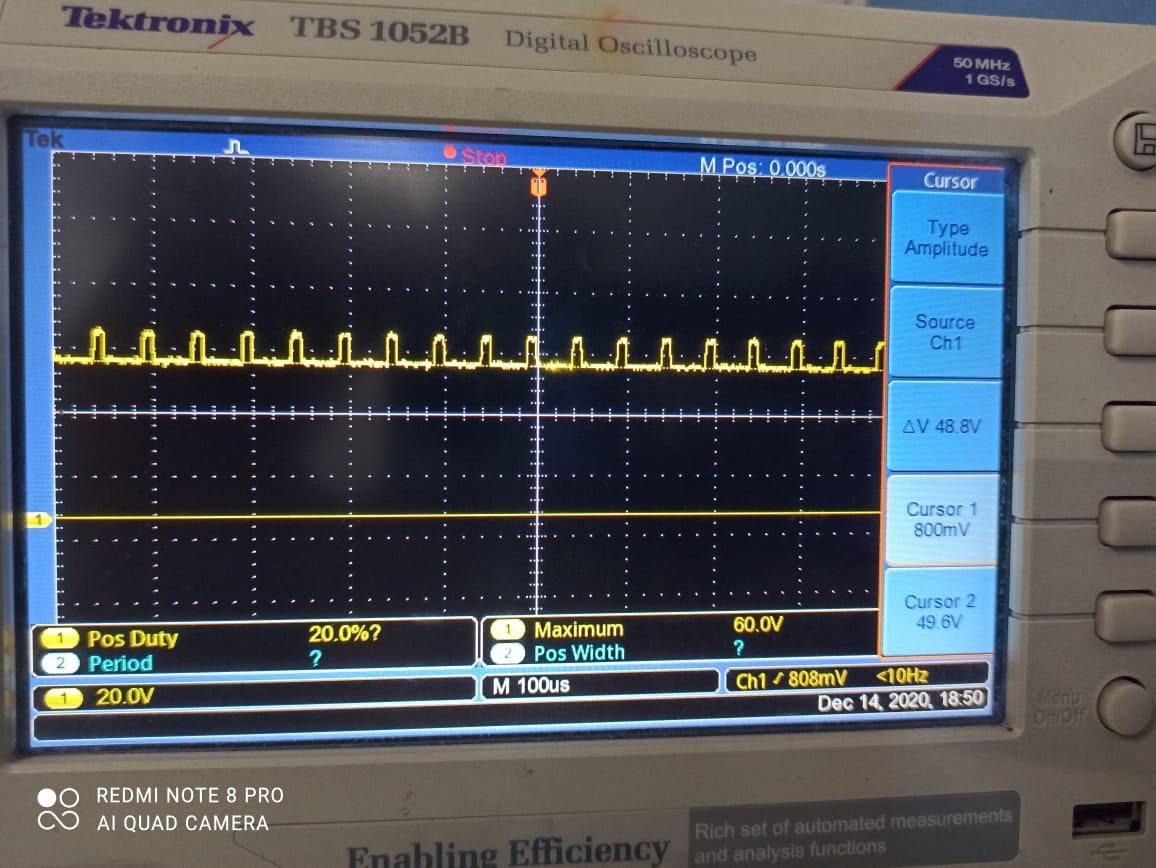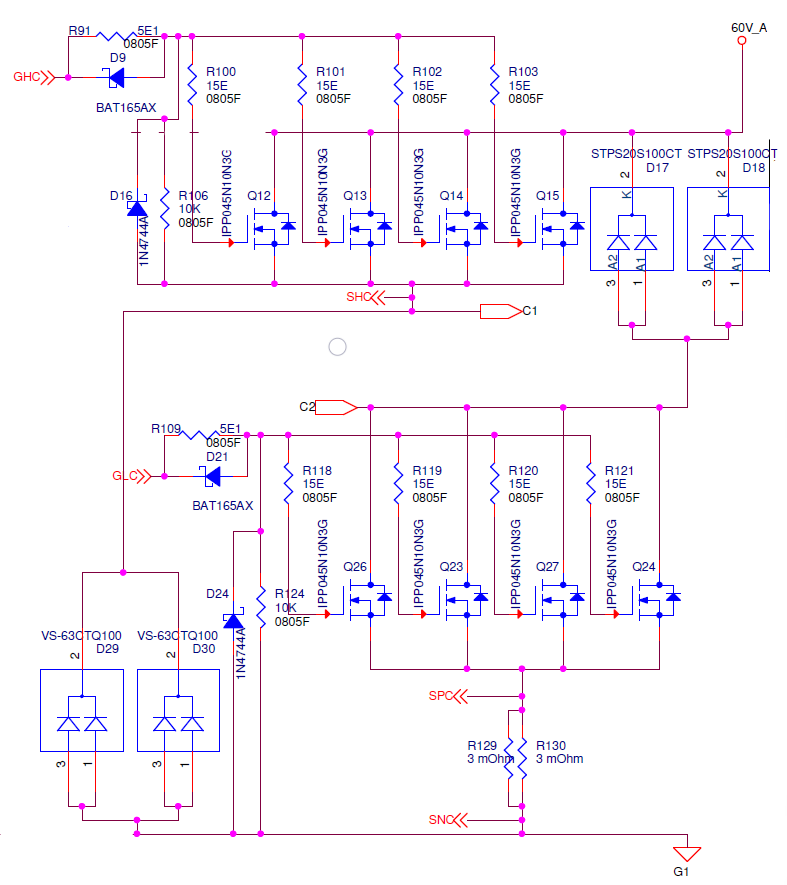Hi,
I am developing 3 phase SRM drive with DRV8353 gate driver in independent mode pwm. With this mode, the top mosfet gate voltage with respect to ground is not going zero instead it is coming as gate voltage pwm + bus voltage(48v). Due to this, the top mosfet always is in always high condition irrespective applied pwm.Refer below waveform,
We removed VGS resistor diode (D10, R104), still same result. Please help me to sort out this problem.
Regards,
Kumar



